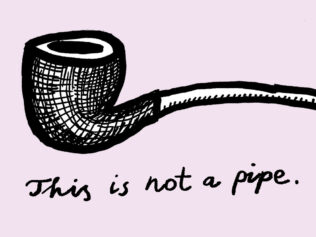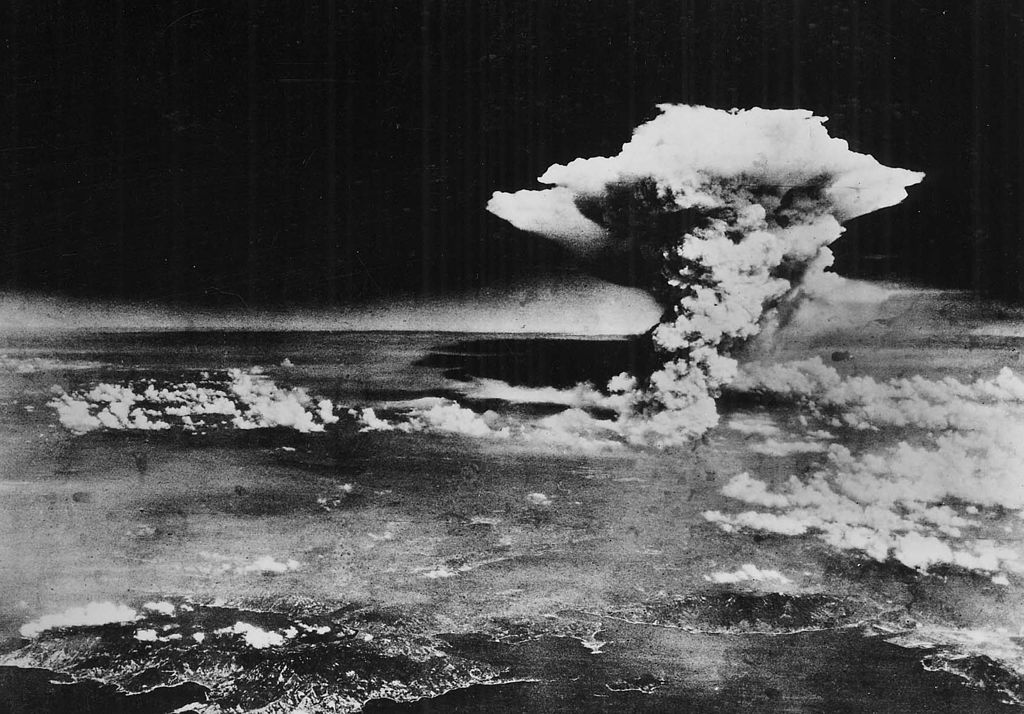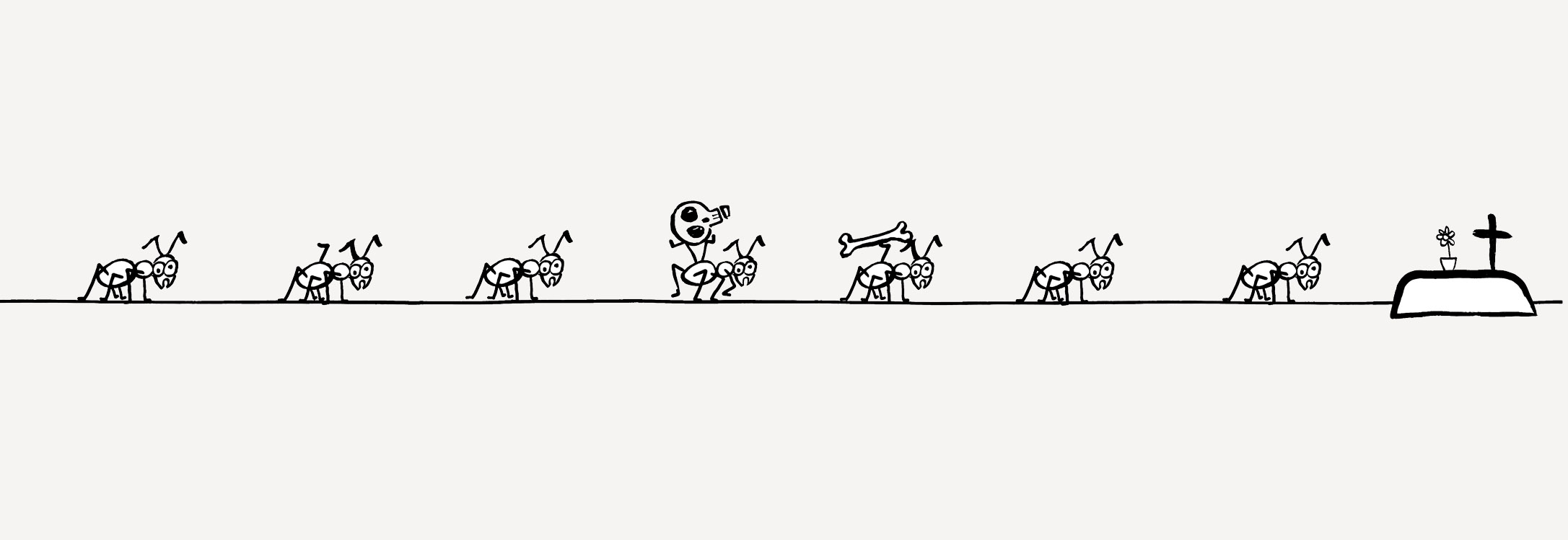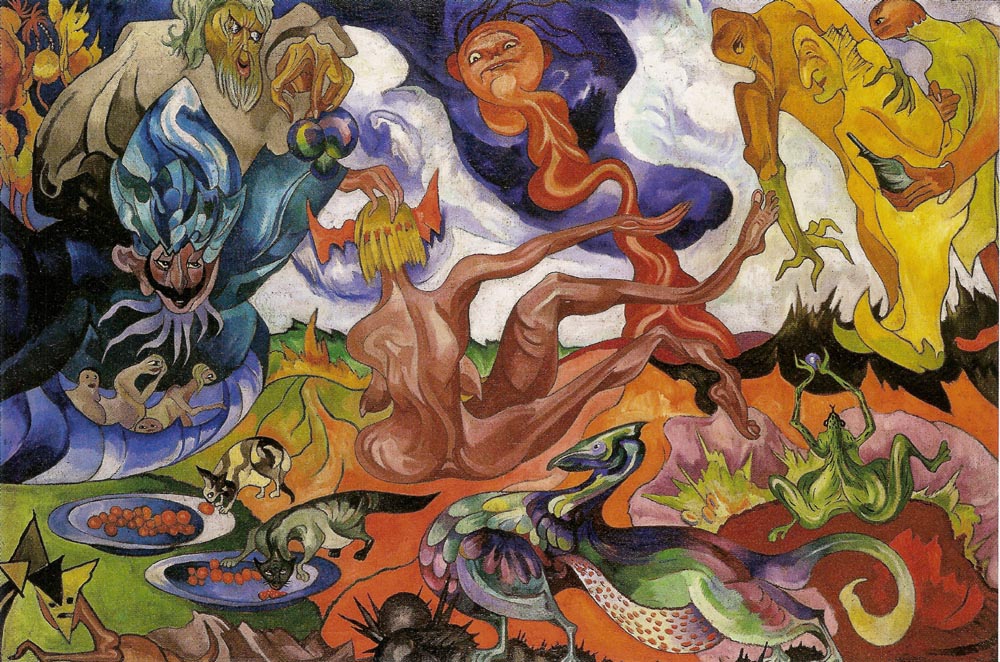
Science historian Oren Harman talks to Tomasz Sitarz about Daedalus and Icarus, metaphors for the human brain, the two faces of gravity, and enchanting encounters with nature.
In my quest for the truth, I have tried to draw from as many sources as I can find. I have taken sips from the relentless stream of scientific discoveries and I have crawled inside long-abandoned Neolithic caves harbouring stories of old. From both of them I gained new wisdom, but my thirst was not quenched. It seemed that there was no answer to be found, or that the answer is so powerful, so otherworldly, that it escapes my eyes, for they are unaccustomed to the shadow encompassing the human soul.
Then, at the top of the hill in Heidelberg, I heard a story about motherhood that was told like no other I had heard before. It spoke of the soul and it spoke of physics, without juxtaposing them or treating them as two opposite poles of understanding, but entangling them into one powerful myth that explains measurable forces in action and also sheds light on the human psyche, which is, as far as we know, the only witness to the miracles of the universe. This story illuminated to me the role of the scientist and the role of the storyteller. It enabled me to see that they do not have to be two separate beings. Stories can be told by scientists, who have the knowledge and understanding of the natural laws present in our world, as well as the ability to communicate them to the rest of their tribe.
The particular story I mentioned was from the book Evolution: Fifteen Myths That Explain Our World by Oren Harman, whom I was able to ask some questions about the power of myths and the role of the storyteller.
The Earth and the solar system were created from a spinning cloud of gasses and dust. In your book, you turn this scientific description into a myth.
Yes, the myth depicts a narcissistic sun as the central point around which all the planets revolve, helplessly trapped in their orbits. It has a little kick to it at the end, subtly transferring the focus from the sun to scientists, some of whom believe that all wisdom revolves around them. That they possess a magic method which allows them to understand all things worth knowing. There is a threat as well as a promise in this way of thinking. The rigorous scientific method, honed over centuries, teaches us a great deal about ourselves and our universe, but it also sometimes tricks us into believing that we understand more than we actually do. I am no postmodernist, but I think that it is important to make a distinction between knowledge and wisdom. In the myth, I poke a bit of fun at science for placing itself at the centre of the human quest for wisdom.
Gravity is of great importance in your works. How do you understand it?
Like natural selection, gravity is in fact just an observable result, not a cause, and in that sense it remains a sort of mystery. We all know it as the force that pulls bodies together. However, gravity is also counter-intuitive. It pulls things together, as well as pulling them apart. We observe that due to something which we call dark energy, gravity is pulling on bodies in space, accelerating the universe’s expansion and increasing the distance between its galaxies, planets and stars. Niels Bohr said that a great truth is something for which its opposite is also a great truth. Gravity is a good example of that. From what we understand of the workings of the universe, the force that pulls things together and the force that breaks them apart is one. I call it the ‘Janus face’ of gravity.
We know that the sun was created by gravity because matter was compressed to the extent that thermonuclear reactions began. But one day the sun is going to collapse and die due to gravity.
The sun is burning its internal energy in a kind of act of self-cannibalism, which is of course very fortunate for us. We live in a very particular zone of temperatures due to our serendipitous distance from the sun. This has allowed for the miracle of life over the past four billion years on planet Earth, however in the long run the burning of hydrogen by the sun is a destructive process that will lead to the death of our solar system. Creation and destruction are inseparable forces, mirrored in our own human ability to both imagine infinity and struggle to come to terms with the finitude of life.
In one of the myths in the book, I find such duality in mitochondria, tiny organelles that exists in all our cells beside blood. Their ancestor was a single-celled organism called alphaproteobacteria. It was living a good life. One day, it was swallowed by a larger single-celled organism, methanogen. Methanogen didn’t know what to do with oxygen and was therefore struggling for life. Now, suddenly, thanks to alphaproteobacterial, it learned how to harness oxygen to generate energy. The ancestor of mitochondria, in other words, allowed for the birth of multicellular life. Billions of years later it also contributed to senescence or cellular ageing, since the process by which it produces energy in our cells also leads to generating free radicals. Ultimately, what gave us life also kills us. I find great beauty in these contradictions and I am also humbled by the fact that you can’t have one without the other. It creates both tragedy and meaning. The apparent contradiction between destruction and creation exists at all levels of life, as well as in the cosmos. It resonates throughout matter and life. Hence we return to mythical thinking. We can’t always reduce large systems to their constituent parts. What is true for a small part doesn’t always have to be true for a bigger system. Tangled and interconnected entities that resonate and influence each other are a magical and very fertile field of poetry. This is of huge importance to me when I write my books.
If myths can be found in science then they are surely present in our everyday life.
They are everywhere. In pop culture, in the way we communicate and understand the world around us. But they are also hard to see. To explain it, I will use a parable borrowed from David Foster Wallace. There are these two young fish swimming along and they happen to meet an older fish swimming the other way, who nods at them and says: “Morning, boys. How’s the water?” The two young fish swim on for a bit, and then one of them looks over at the other and goes: “What the hell is water?” Sometimes the most obvious, important realities are often the ones that are hardest to see and recognize.
Recently I was told that in Sanskrit the word sutra means ‘string’. Both string theory and Eastern aphorisms try to provide a unified description of the surrounding world. Of course, the sutras came earlier. So we are unravelling things that were already known or felt before using different language and a different approach that places us, humans, in the centre of it all. While in the old days the task of explaining reality was attributed to storytellers with their myths, now storytelling based on scientific inquiry seems to be taking over. How are they different?
Let’s talk about how the human brain was perceived throughout the years. In the 16th century, natural philosophers thought of it as hydraulic system. All their questions and all their hypotheses were based on this metaphor. In the 17th century, the brain became a grand mechanical clock and in the 19th century, suddenly a telegraph switchboard. Then in the 20th century, the idea of a neural network and then a quantum computer became popular. In each case, we are dealing with a different entity, a different brain. Different questions can be asked, leading to different answers. It’s important to remember that science never describes reality directly, but always in the form of a model or a hypothesis, which is itself a kind of story. Also, models and hypotheses are described in human language, which is in turn extremely sensitive to its times, to its culture. We can only understand our world from the position in which we are placed – a cosmological position, the position of our planet, as well as a historical one.
And the sutras?
There are obviously genuine novel scientific discoveries happening all the time. But the big questions still remain: what is matter, what is time, what are the origins of things? The experimental approach can only provide partial answers, because we are not dealing here with scientific questions but also with philosophical and existential ones. Each generation tackles these very fundamental problems with the language at its disposal, which is the means by which you understand and describe the world around you. Over time, that language inevitably changes.
Why then is the scientific approach seen as a more mature, more trustworthy form of explanation?
We believe that our modern scientific language is a more powerful and better tool than what the ancients had. That’s not always true. For thousands of years, the smartest people on Earth looking into the heavens believed that the explanation of the movements of the stars lay in the epicycles. Aristotle thought that women had fewer teeth than men. Today we look at this as a form of foolishness or ignorance, but that is short-sighted. Ask yourself: why could someone as brilliant and wise as Aristotle have got such a silly thing like this wrong? Because our gaze is strongly influenced by the larger culture in which we operate. In Aristotle’s times, the idea of what a woman was and what a man was were different from how we understand it now, to the point that it literally constricted what he was able to see, and not see, in the world. Likewise, the idea of epicycles was part of an entire mediaeval Christian religious world of harmonies that united music and the movement of stars in the heavens.
Scientists use English as their Esperanto. Due to globalization, our cultures do not differ as much as they used to, and we can transfer thoughts and messages to the other side of the Earth in the blink of an eye. Does this enable us to create a more coherent, and therefore artificial, mythology?
Modern technologies and social media make it easier to convey ideas to larger groups of people, just as the growth of the printing press did in earlier times. One of the most popular science books of the 20th century is The Selfish Gene by Richard Dawkins. It was very influential in pop culture but also in the scientific community. It changed the way we ask scientific questions in the field of genetics. The book acknowledges the concept of the self, of course. Think of our legal systems with their ‘punishments’ and ‘culprits’, or our education systems with their ‘personal achievement’ and ‘exams’. None of those words would make any sense without a notion of the self that is strong and coherent. But the self may be one of the greatest myths of modern times. We are aggregations of biological processes rather than entities. Most cells in our bodies aren’t ‘ours’ – they’re bacterial. Dawkins used a metaphor that rendered man a puppet and genes the master with the strings. The idea that we are not masters of our own fate has been around for a long time, of course, much before Richard Dawkins, or even biology. But the written word, with its modern metaphor, allowed the idea to spread and win over even more minds.
It’s interesting to note that in the field of biology, the ‘gene’ is increasingly being challenged from the inside. We understand more and more that a discrete gene, rather than the complex dynamics of many interacting processes, may be a fiction. I think this understanding is being achieved right now, leaving very little of the classical definition of the gene intact. The idea of a gene as a reified entity, which we used to think of as real, is crumbling before our eyes. Soon, a new myth will be invented. Though, of course, it will take time to extricate ourselves from the pull of the powerful metaphor, since careers have been based around it and lives invested in it, which is no small thing. Perhaps in a hundred years we will not be talking about a ‘gene’ but about a ‘lene’ – a dynamic quotient of the interaction of all functioning proteins in a cell. Perhaps the ‘lene’ will better explain that which needs explaining.
The point is: yes, science is a lingua franca and it may be easier today to disseminate myths to the larger public in a shorter amount of time. But the principle by which we communicate myths remains in place. It teaches us time and again that the best we can do to understand ourselves and our place in the universe is to use our culturally-laden language. Science differs from mythology in an important way: it is a competitive form of storytelling. It also uses a method that is very strict. But on the other hand, it is just old wine in new bottles. We are enveloping our existential conundrums in an evolving set of terms and language.
I like the idea that maybe a myth, given a chance, can become some kind of a bridge, or, to use a different metaphor, a glue. That it can allow individuals to really experience life together, to appreciate how the world is, how society is and could be. Do stories have this kind of power?
Here’s a metaphor that I find useful: humans are like dots on a pointillist painting. A single dot cannot really experience or be aware of the entire picture. And despite all the technological advances simplifying communication, we seem to be more separated from others. I think that it is one of the paradoxes of modern life. The more we fly, the denser we live, the more difficult it is for us to find a community. In a large city, you go down from your apartment and you are like a little fish that enters the enormous ocean. That’s what everyday life looks like for an increasing fraction of humanity. It also results in people being less attuned to nature.
Just a few weeks ago, I took my five year-old daughter to the Red Sea. We went diving at the reef and after she came up over the water and took off her snorkel, she had this gaze of wonderment: she had glimpsed an octopus! Such encounters with sentient beings entirely different from us are precious and invaluable. We lose that as we flock to cities and live a technological life in front of a computer. I think that this technological mindset is also behind the idea that our problems can be solved if we just employ enough logic and computing power. Science and technology can be of invaluable help with solving global warming and pollution issues, but the most important thing is to change our behaviour. I try to reinvigorate and reawaken such thoughts in the minds of my readers, many of whom find themselves increasingly detached from the natural world. I hold the picture of my little daughter’s expression of wonderment in my mind.
I myself am a huge supporter of changing the mindset of humanity. We shouldn’t believe in technological salvation and instead appreciate what we have, while consuming less and growing more slowly. Do you think that the mythological form of narrative is a tool that can be used to change this mindset?
I believe so, and that was one of the reasons I wrote Evolution. Sallustius said: “These things were never, and are always”, and this is a wonderful way to think about the role of mythology. Mythology doesn’t describe what happened. But in the world of myths, the facts or knowledge aren’t relevant. While science describes the world directly, by measuring and calculating everything, mythology takes aim at those questions that cannot be answered. It is supposed to push us into challenging our truths while also acknowledging our limitations. The search continues and in this search, fulfilment can be found.
What was your favourite myth when you were a child?
I think I was most captivated by the myth of Daedalus and Icarus. The father warning the son: “Don’t go too close to the sun.” The curiosity and sense of joy that comes from the ability to control flight, which is so intoxicating. For curiosity is very intoxicating, and so is power. As a kid, I obviously felt great empathy for the father, but I felt even closer to Icarus, because I could empathize with his curiosity and the intoxication that came with his wings. In our attempts to understand (approaching the sun is a metaphor for understanding), we often ignore danger. It is such a tragically beautiful and foundational myth, because our search for understanding provides meaning, but also necessarily encompasses tragedy. Often what we ultimately learn is not what we set out to find. But we can’t help ourselves from pursuing this knowledge.
Every species in nature is unique in its own ways. Even though uniqueness may be overrated, our uniqueness is special to us. It is ours. It determines who we are. And our way of being unique is that we have this fight in our breast between being completely social and completely solitary. We exist in the in-between of being able to imagine the end of time and being able to imagine our mortality. We can’t override ourselves. Our nature will always push us further, even though we understand that there will always be a price to pay for eating fruit from the tree of knowledge. The ancients were very wise. They understood these basic truths long before anyone spoke about atoms, genes or molecules. It gives me a sense of joy and comfort to be tied to the past, to the ancients who lived in completely different circumstances, who spoke very different languages, believed in very different gods. Despite all that, we are connected over time through these powerful truths about our species. So we continue the march with our eyes open – and search for the meaning of the march itself.
Parts of this interview have been edited and condensed for clarity and brevity.

Oren Harman:
An Israeli writer and science historian. While attending high school in New York City, he emerged as a talented football player. He later studied at Oxford and Harvard. His work has been published in, among others, the journals Science and Nature.
Introduction and biography translated from the Polish by Jan Dzierzgowski










